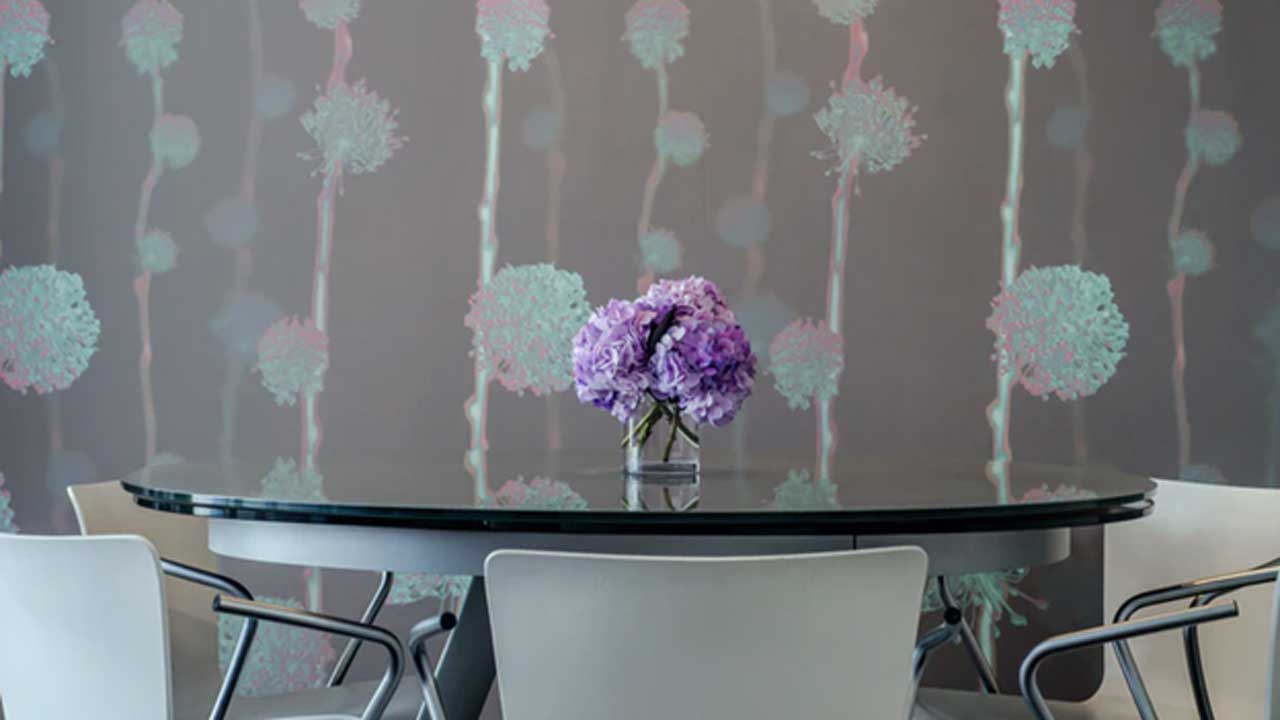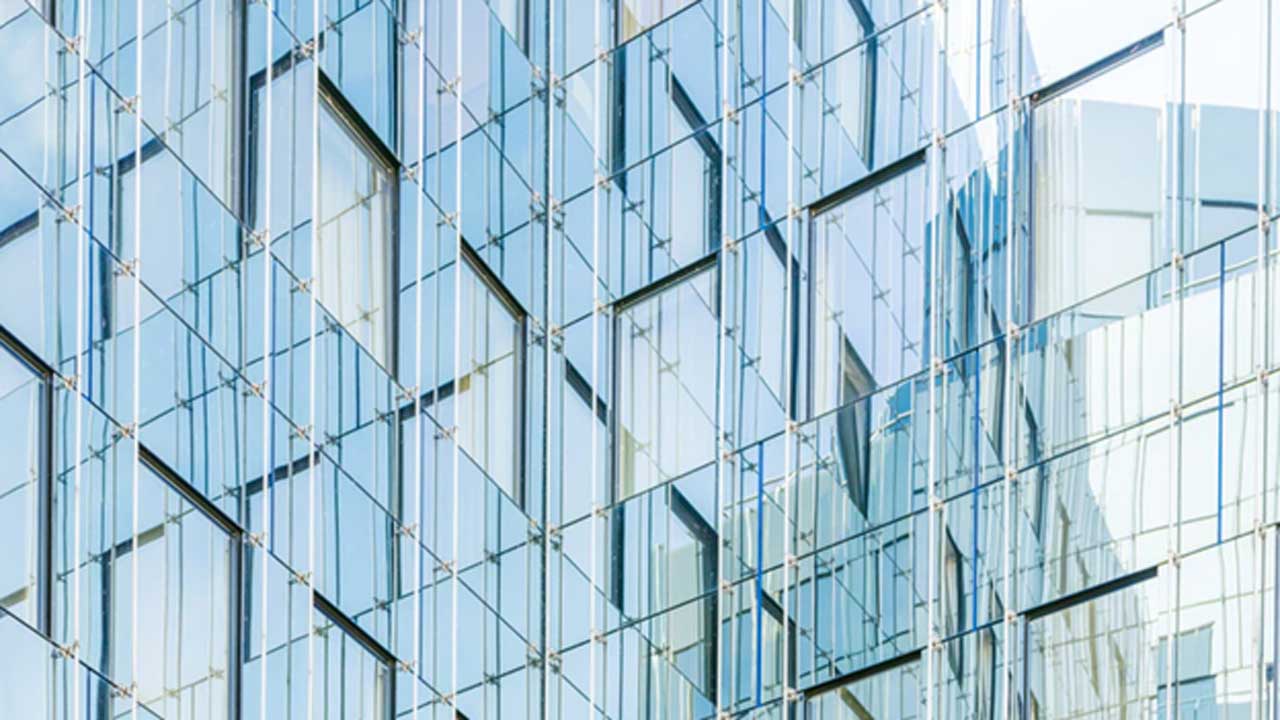Since the 20th century, glass and mirror surfaces have been one of the materials that was often used in interiors. The progress of factories made it all the more accessible as, from the 1960s, more innovative technologies have been made possible.
Then, thanks to the “float” revolution and the development of new decorative and resistant finishes, these naturally transparent materials began to be used in order to separate spaces, cover walls, create floors and even furniture.
Now, interiors benefit from more lightness, natural and economical lighting, spaces that seem larger and deeper, better general light in the rooms, and healthy and easy-to-maintain surfaces. For all its strengths, interior glass and mirrors became a distinctive sign of contemporary style.
-
The float revolution
For the 6000 years that it has existed, glass has always fascinated people. Originally, the mixture of sand, soda and limestone cooked in an oven produced an opaque material. It was not until the 1st century AD that it became transparent, thanks to the addition of manganese.
It was not until 1920 that the production of flat glass became the same as it is today. The so-called “float” flat glass marked the real revolution in the production of large and perfectly uniform glazing, and allowed the emergence of the more technical and also decorative glasses and mirrors that we know today.
Now let’s delve into how exactly you can use glass elements in your home!
-
Colored glass used for partitioning
An original glazing is the element that makes any glass surface perfect as a partition element, without disrupting the view or blocking the light. Such glass is not as simple as you would think. When it leaves its production line, it is a simple piece of glass, therefore brittle. But for use in partition walls, the glass has to be subjected to additional operations. It has to be tempered, undergoing heating, then rapid cooling. This makes its surface 5 times more resistant than that of conventional glass.
Tempered glass and mirrors are used especially in hot environments or when the glass/mirror supports a load in excess of its weight (for a door).
-
Opalescent glass to preserve privacy
When it comes to conveying light while maintaining privacy, it is possible to replace transparent glass with opalescent glass (not suitable for mirrors). This is also a great choice to semi partition the bathing zone from the rest of the bathroom.
To roughen a simple glass, sandblasting is enough, but you can also use a tempered piece of glass, which has been mattified by a translucent enamel baked at high temperature. This provides a silky effect on one side of the glazing “, specifies our expert.
-
Patterned printed glass and mirrors, a trendy alternative
Another type of such surfaces, with different printed patterns, is currently on the rise. This is a great choice to equip a roof window or a part of the wall against a window.
Pro tip:
When the glass is used as a dividing wall in a workshop frame, for example, it is advisable to opt for laminated glass rather than tempered. The process of putting several sheets of glass together, one on top of the other, keeps the glazing in place on its frame if it should break.
For opaque glass, such as mirrors or lacquered glass used, for example in cupboard doors, a “safe” film is added to the decorative glass which, in the event of breakage, keeps the pieces in place and prevents cuts.
-
Glass and mirrors as a decorative wall covering
The use of glass and mirror panels and as a decorative wall covering is in full development. It is applied like a tile, using neutral silicone glue – this allows rapid installation and fewer details.
The wall-mounted use of glass/mirror panels in bathrooms is also experiencing a boom in contemporary designs. In a shower, you can use a 6 mm thick glass tinted in an intense and brilliant color. These panels solve waterproof material problems while being installed much faster than tiling. It also makes it possible to create seamless shower bases which are therefore easier to clean.
-
Decorated glass and mirrors for personalization
Whether for a partition or wall lamp, glass and mirror surfaces can also be adorned with patterns for creative purposes. It can be transformed into an artistic item and would differ radically from patterns from the mass market.
Screen printing, enamelling, film application or digital printing, the processes for decorating glass are increasingly available! A screen-printed glass partition with brick patterns can serve to differentiate the spaces while remaining light and bright. The pattern is usually created on the surface of the glazing by the stencil ink roller technique applied cold to the surface.
Patterned mirrored glass plates can be applied around the windows to expand the space and give an exterior feel to the interior. The application of high temperature annealed enamels is another way of decorating the glass that allows the unalterable application of patterns, photos or text on all varieties of glazing, in white or color.
-
More hygienic surfaces for your home
Glass is also a practical material, thanks to its inherent properties. Inorganic and neutral in VOCs (volatile organic compound), it is healthy and well suited for alimentary use. As a bonus, it is resistant to conventional cleaning products. Architects also appreciate it for another of its qualities: it can be bright and colorful – very effective in giving depth and character to a small room.

Extremely resistant, the lacquered and tempered glass can be cleaned very well with mild soap and can be found in a variety of shades. You can also opt for printed patterned glass. The only flaw of glass is its micro-scratching. Some people recommend varnishes, but the best solution is not to cut straight on it, without a board.
-
Glass floors, stairs and railings: all made possible by glass
Another decorative use for glass and mirrors concerns the use of this material in circulation, in particular, on floors or stairs. Decorative glass is not often used this way, although it is very much possible.
For example, a glass floor can create a daring passageway on the first floor, bringing a lot of lightness, and ultimately, originality, to the design solution.
For glass use on stairs, floor slabs or even railings, standards are very strict. We recommend laminated glass with a minimum of three layers and several PVB sheets interposed for mechanical resistance and safety.
It is worth recalling that while glass and mirror surfaces are materials with immense qualities, that makes them no less dangerous. Tempered, thick, impact and heat resistant glass will not stay in place if it shatters.
That’s why it is wiser to opt for laminated glass. Moreover, it is important to install and use it in an informed manner, if necessary with the help of a qualified professional, and in compliance with the strictest standards in force.
What do you think of glass and its decorative potential? If this idea sounds just perfect for you, we invite you to take a look at some exclusive, outlet, glass furniture from nfoutlet! But hurry up before someone takes an awesome item from under your nose!
